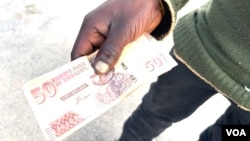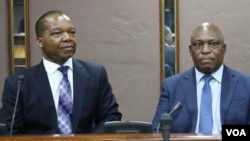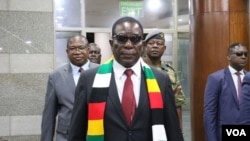On the eve of the anticipated rollout of a new gold-backed currency, Zimbabwe's central bank announced Thursday that it has the equivalent of 2.5 tons of gold reserves.
Speaking in Harare after seeing the assets of the Reserve Bank of Zimbabwe, John Mushayavanhu, the new bank’s governor, told President Emmerson Mnangagwa – whom he addressed as H.E., for his excellency – that the bank’s balance sheet was healthy, with reserves of gold and other minerals worth $175 million.
“I have taken over the control of the central bank," Mushayavanhu said, "and one of the things I had to do upon taking over was to verify the assets that the central bank holds. And this morning I showed H.E. the gold that is in the vaults, and I can confirm that we have in the vaults at the central bank 1.1 tons of gold.
"We also have other minerals – diamonds and so forth. If converted to gold, [they would] be equal to 0.4 ton of gold. We have other gold which is held offshore. It is worth 1 ton of gold.”
On Friday, Mushayavanhu is expected to announce the introduction of a gold-backed currency to replace the worthless local dollar, which is currently trading at around 30,000 to one U.S. dollar and, unlike the South African rand, does not circulate in neighboring countries.
This was the first time in recent memory that the central bank gave an accounting of its gold and mineral assets. Mnangagwa said he was happy to physically see the assets that outgoing Reserve Bank of Zimbabwe Governor John Mangudya handed over to Mushayavanhu.
Responding to a question from journalists about whether the country had enough gold to back its anticipated new currency, Mnangagwa said, “Let me assure you that my government does not work on rumors. We work on facts. Rumors can continue flying, but you have been able to come here and see facts for yourselves. So you should compare the facts you see today and the rumors you hear in the streets.”
The press conference generated much debate on social media, with some saying the country’s gold reserves were being looted. One businessman allied with the ruling Zanu-PF party, Pedzisayi Sakupwanya, said he delivered 13 tons of gold to the central bank last year.
Zimbabwe has introduced and abandoned at least five currencies since independence in 1980, all of which lost value to become almost worthless. It remains to be seen how well the new gold-backed currency is accepted by the public, and how it trades against the dollar and the South African rand.
Editor's note: An earlier version of this story misspelled that last name of John Mushayavanhu.










